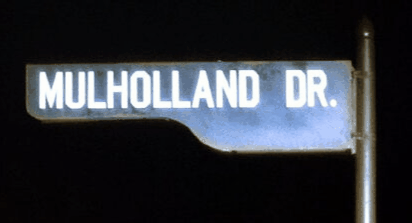Mother Tongue: The White Aesthetic Necessitated by the ‘Glasgow Miracle’
The White Aesthetic Necessitated by the ‘Glasgow Miracle’
Publication accompanying the exhibition: “Two Invisible Case Studies” | Malmö Konsthall | Maud Sulter & Oladele Ajiboye Bamgboye | presented as part of 24 Spaces: A Cacophony | 29 July – 7 August 2013. Curated by Mother Tongue
The following is a copy of https://mothertonguecurating.com/projects/#/what-we-have-done-what-we-are-about-to-do/ which sets the publication and exhibition in context:
“Two Invisible Case Studies Pt I Part of ‘What We Have Done, What We Are About To Do’ CCA Glasgow Preview 17th August, Exhibition Open 18th August – 15th September 2012
‘What We Have Done, What We Are About To Do’ was an exhibition curated by Dr Francis Mckee, revealing over 140 films documenting the activity of the CCA Glasgow#s predecessor, the Third Eye Centre, in the 1970s. The footage covers the early existence of the organisation in Blythswood Square, the construction of a gallery space and café in 350 Sauchiehall St and the appearance of many famous artists, bands and performers. In the spirit of the age, the films also chart Glasgow itself, audiences and activities in the art centre, and key figures such as Jimmy Boyle, Allen Ginsberg, Morton Feldman, John Byrne, Michael Craig-Martin, Madelaine Taylor, Keith Tippett and Tom McGrath. This exhibition was part of a wider AHRC project between Glasgow School of Art and the CCA Glasgow seeking to attend to alternative art histories of the local arts community, titled ‘The Glasgow Miracle: Materials for Alternative Histories.’ An essay on this wider project written by Francis Mckee can be found here.
To accompany this exhibition, Rebecca Wilcox and Oliver Pitt of Prawn’s Pee were invited to curate a series of responses to the exhibitions’ premise, from artists, musicians, curators and designers. Responding to the idea of archives and the process of archiving, those invited – including Mother Tongue – delved into the past histories of both the Third Eye Centre and CCA to query the relevance of these traces and to create something new from the fragments that remain.
Mother Tongue’s response to the Third Eye Centre/CCA-Glasgow archive took the form of a re-presentation of exhibition material and artworks from Maud Sulter and Oladélé Ajiboyé Bamgboyé, existing in the archive via the exhibitions Alba [1995] and Through Photography [1989], respectively. While both were active artists in Glasgow in the late1980’s and early 1990’s, they are notably absent from the grand ‘Glasgow Miracle’ narrative, detached from their contemporaries, an issue about which both Sulter and Bamgboyé were vocal.
Our re-presentation here of their work from the archive is intended to highlight not only their omission from the Glasgow Miracle, but to speculate on the relationship between this omission and the whiteness of the known narratives surrounding art histories of Glasgow, and more broadly, Scotland. These explorations culminated in an essay, released mid-way through the exhibition, and made freely available in the gallery space. The following year, other Tongue returned to ‘Two Invisible Case Studies,’ to further develop the project and to create an expanded version of the essay. The 2013 version of this can be found as a .pdf below.
Maud Sulter [1960-2008] Born in Glasgow of Scots and Ghanaian descent, Maud Sulter was a writer, playwright, cultural historian and artist, working with installation, photography and video. She attained a Masters degree in Photographic Theory, and came to prominence through her programming of Check It at the Drill Hall, London and inclusion in the exhibition The Thin Black Line, curated by Lubaina Himid at the ICA, 1986. Her work was subsequently included in exhibitions including: Victoria and Albert Museum in 1987; the Johannesburg Biennial (1996); and the Scottish National Portrait Gallery in 2003. Between 1992 and 1994, she was the Principal Lecturer in Fine Art at the Manchester Metropolitan University, and later directed and founded the gallery Rich Women of Zurich, London, which promoted cultural diversity and mid-career artists.
Sulter was awarded the British Telecom New Contemporaries Award 1990 and the Momart Fellowship at the Tate Gallery Liverpool in 1990, alongside acknowledgements of her writing including the Vera Bell Prize for Poetry (awarded for As A Blackwoman). Sulter’s work is held in the collections of the V&A London, Arts Council Collection, the British Council, the Scottish Arts Council and the Scottish Parliament Collection, amongst others.
Oladélé Ajiboyé Bamgboyé [b. 1963] Born in Odo-Eku, Nigeria, Oladélé Bamgboyé’s family emigrated to Glasgow in 1975, where he completed a degree in Chemical Engineering in 1985. In the late 1980’s, Bamgboyé began to produce photographs, establishing his practice through documentation photography for a number of galleries and institutions in Glasgow, including Transmission Gallery and Variant Magazine. A founding member of Street Level Gallery, early exhibitions of his work at the Third Eye Centre and Transmission led to Bamgboyé being awarded a summer studio residency at the Banff Centre Canada and the Richard Hough Prize for Photography in 1992. Bamgboyé re-located to Berlin, then London, undertaking an M.A in Media Fine Art Theory and Practice at Slade College of Fine Art.
International exhibitions of Bamgboyé’s work include the Johannesburg Biennial, “Cross/ing: Time-Space-Movement” [1996]; Documenta X [1997]; The Short Century: Independence and Liberation Movements in Africa, 1945 – 1994, P.S. 1, New York and Museum Villa Stuck, Munich [2002]; Animations, PS1 New York and Kunst Werke, Berlin [2001]. At the time of writing, the curators have been notified that Oladélé Bamgboyé has ceased to remain working as an artist.”


